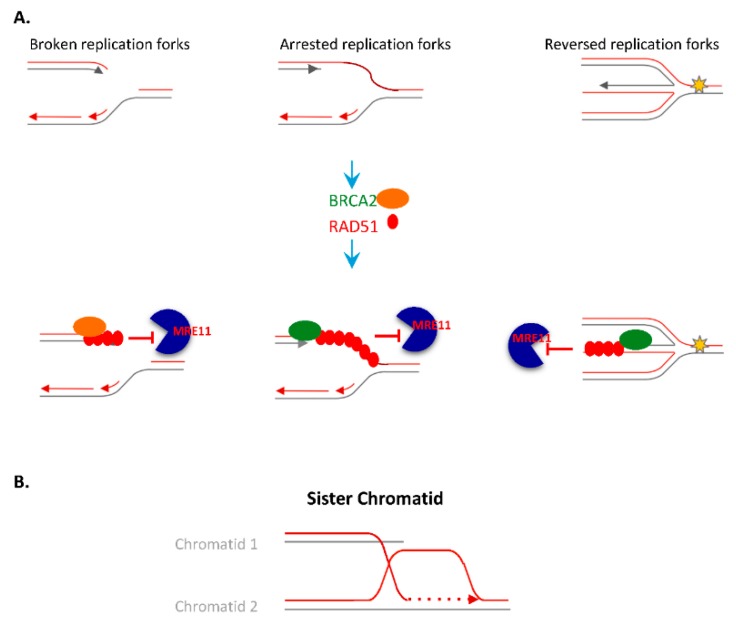Figure 2.
Replication fork protection and restart. (A). A replication fork can be broken, or arrested; when reaching an obstacle that arrested it, replication fork can also be reversed generating a so called “chicken foot” structure (right panel). Various actions may take place to protect the replication forks including: BRCA2 loading of RAD51 to protect the forks and/or BRCA2 stabilizing the RAD51 nucleofilament on the single-stranded DNA (ssDNA) regions, thereby preventing MRE11, CtIP, and EXO1-dependent resection (preventing degradation of the arrested forks). (B). The strand exchange activity of RAD51 allows then to restart arrested replication forks, using a homologous sequence as matrix, generally the sister chromatid, leading to sister chromatid exchange.

